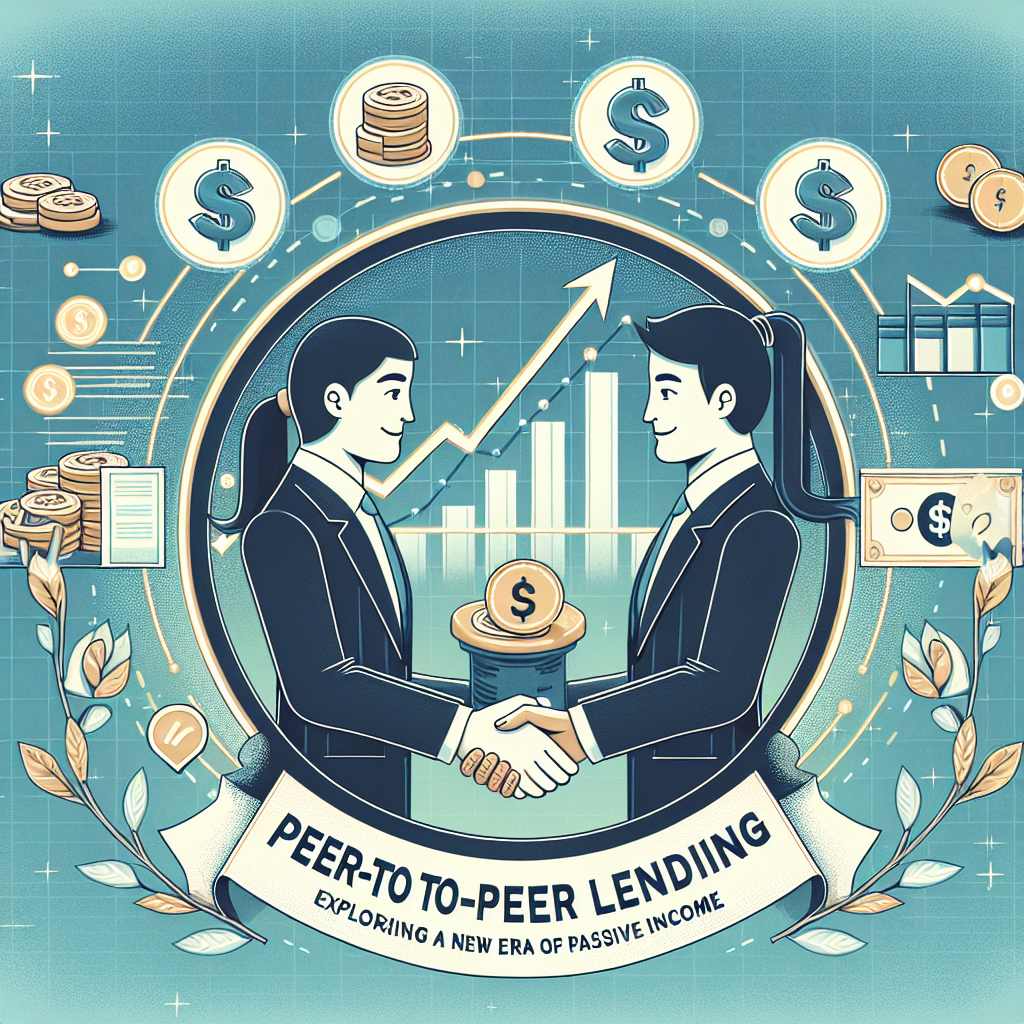In the evolving landscape of financial investment, peer-to-peer (P2P) lending has surged in popularity as an innovative method for earning passive income. By directly connecting borrowers with investors, P2P lending offers a unique opportunity to diversify your investment portfolio while potentially generating substantial returns. This article delves into the fundamentals of P2P lending, its benefits and risks, how to get started, and its place in the future of finance.
What is Peer-to-Peer Lending?
Peer-to-peer lending is a financial practice that allows individuals to lend money to others through online platforms without the intermediation of traditional financial institutions, such as banks. In essence, P2P lending platforms assess the creditworthiness of borrowers and facilitate the direct transaction between them and individual investors.
How P2P Lending Works
-
Online Platforms: Platforms like LendingClub, Prosper, and Funding Circle act as intermediaries, providing a safe environment for borrowers and lenders to connect.
-
Loan Listings: Borrowers create profiles and post loan requests outlining their needs. These listings include details such as the loan amount, purpose, and duration.
-
Investing: Lenders browse these listings, assess risk profiles, and decide which loans to fund. They can either fund the entire loan or allow multiple lenders to contribute toward the total.
- Interest and Repayment: Borrowers repay their loans over time, with interest. Investors earn returns based on the interest paid, making P2P lending an attractive option for passive income.
The Benefits of Peer-to-Peer Lending
1. High Returns on Investment
One of the most appealing aspects of P2P lending is the potential for high returns. While traditional savings accounts and bonds offer modest interest rates, P2P loans can yield annual returns that often range from 5% to 12%, depending on the loan’s risk profile.
2. Diversification of Investment Portfolio
By investing in various loans across multiple borrowers, investors can spread their risk and avoid significant losses. P2P lending allows for fractional investing, meaning you can allocate smaller amounts across different loans to diversify your portfolio.
3. Transparency and Control
Investors have complete visibility into the loan details, including the borrower’s credit score, loan purpose, and repayment history. This transparency allows for informed decision-making, giving investors greater control over where their money is allocated.
4. Support for Individuals and Small Businesses
P2P lending provides financial access to individuals and small businesses that might struggle to secure funds from traditional banks. This not only supports economic growth but also fulfills a social aspect of investing.
Risks Involved in Peer-to-Peer Lending
1. Default Risk
One of the primary risks in P2P lending is the chance that borrowers may default on their loans. Unlike banks that have established protocols for handling defaults, P2P investors bear the brunt of losses directly.
2. Economic Vulnerability
Economic downturns and changing market conditions can influence default rates. Investors should be cognizant of broader economic indicators when engaging in P2P lending.
3. Limited Regulation
While P2P platforms are subject to regulatory oversight, the industry remains less regulated than traditional banking systems. Potential investors should ensure they choose reputable platforms with transparent practices.
How to Get Started with Peer-to-Peer Lending
1. Research Platforms
Before diving into P2P lending, conduct thorough research on different platforms. Look for those with a solid reputation, strong customer service, and reliable performance metrics.
2. Understand Risk Assessment
Take the time to familiarize yourself with the risk rating systems used by different platforms. Many provide tools for assessing borrower risk, helping you make informed investment choices.
3. Start Small
In the beginning, consider investing smaller amounts to test the waters. As you gain comfort and experience with the platform, you can gradually increase your investment.
4. Monitor Your Portfolio
Keep an eye on your invested loans and the performance of your portfolio. Regular monitoring will help you identify underperforming loans and assess your overall returns.
The Future of Peer-to-Peer Lending
As technology continues to advance, the P2P lending industry is expected to evolve significantly. Enhanced data analytics, artificial intelligence, and blockchain technology may further streamline the lending process, improving the opportunities for both investors and borrowers.
Conclusion
Peer-to-peer lending represents an exciting avenue for generating passive income in a rapidly changing financial landscape. By understanding how P2P lending works, recognizing its benefits and risks, and strategically starting your investment journey, you could potentially unlock a lucrative source of income while contributing to financial inclusion and economic growth. Embrace this new era of investing and explore the potential of P2P lending today!
Call to Action
Interested in diversifying your investment portfolio? Start your P2P lending journey today by exploring various platforms, assessing your risk tolerance, and investing wisely!

